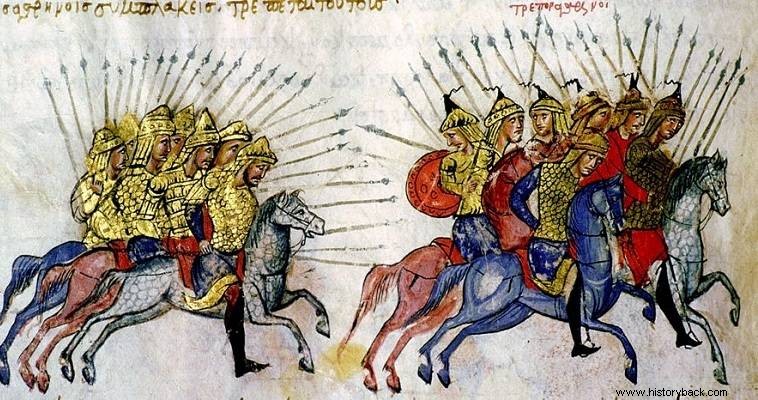
After the establishment of the Arab caliphate, the Byzantine Empire found itself facing a fanatical and stubborn opponent on its eastern borders. The Arabs carried out destructive raids at regular intervals in Asia Minor throughout the 8th and 9th centuries in an attempt to spread, through jihad, "holy war", the territory of Islam.
The Arabs also cooperated with the Paulikians, followers of a Manichaean sect, Tefrik (today's Dervik in Sebastia) and together they destroyed the Byzantine countries. In the 860s AD the Arab emirate of Melitini (present-day Malatia, in present-day Turkey) had become a great threat to Byzantium.
The emir Omar al-Aqta had executed together with the Paulicians, under Karvaias, an incredibly destructive raid in 860 AD. slaughtering, destroying and plundering a large part of Asia Minor. Immediately after, a new Arab raid by the emir of Tarsus followed, while an Arab fleet captured and razed Antalya.
New invasion
In the summer of 863 AD, Omar al-Aqta, reinforced by the forces of the Abbasid caliphate of Baghdad and the Paulicians of Karvaia, invaded Byzantine territory again. The Arabs, according to the Byzantine historian Genesius, but also the unknown continuation of Theophanes' story, had 40,000 men in total. Other sources state that the Arabs had 8-20,000 men.
In the meantime, Emperor Michael III had gathered forces to face them. The opponents met near Nazianzuo. There a bloody battle took place, but there was no clear winner.
The Arab army continued its bloody march reaching Amiso (Sampsuda) on the shores of the Black Sea. According to the Byzantine historians, the arrogant Omar, angry that the sea prevented him from advancing, ordered it to be scourged.
Annihilation
The Arabs attacked, occupied and plundered Amiso, slaughtering hundreds of its inhabitants. When the emperor was informed of the destruction of Amiso, he ordered the formation of an army of 50,000 men which he placed under the command of the Domesticus of the Schools (general of the elite imperial battalions) and his uncle Petronas and the general of the Subject of the Bucellarians Basileus (Nasar).
The Byzantine forces approached the Arabs from three different directions. Demonstrating remarkable skill, the Byzantine generals managed to coordinate the movements of their forces coming from as far as Macedonia and succeeded, on September 2, 863 AD. to almost surround the Arab army at the Lalakaona river, about 130 km southeast of Amiso. The only escape route for the Arabs and their allies was through an adjacent hill.
Both opponents tried to capture the hill but the Byzantines succeeded n. The next day, September 3, Omar gathered all his men and attacked directly west, against Petronas' men in order to open a passage through the Byzantine line.
Petron's men, however, withstood the fancied attack of Arabs and Paulikians until the other Byzantine forces attacked them from the flanks and rear. After the crimes of the Arabs in Asia Minor and Amiso, the Byzantines did not seem particularly eager to take prisoners.
The whole of the Arab army perished along with Omar and Karvaia. A few Arabs managed, temporarily, to escape, under the leadership of Omar's son. But they too were pursued by Harisianos' cloister chief Machiras and were captured.
The Byzantines took advantage of their proud victory by also attacking the Emir of Tarsus whom they defeated in battle and killed. Thus, three particularly dangerous opponents for the Empire were destroyed. The battle at Lalakaona marked the change in the balance of power, paving the way for the great counterattack against the Macedonian Dynasty.
